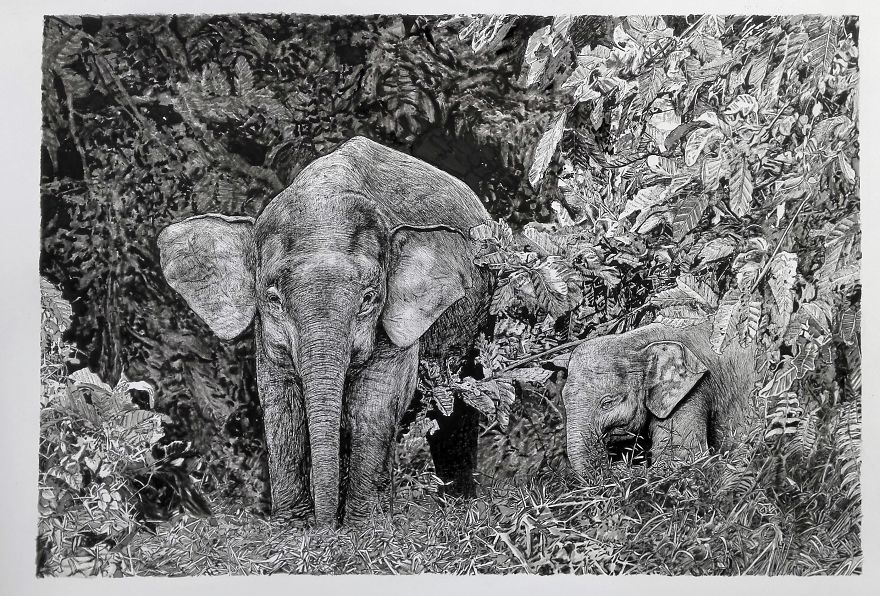Borneo Elephant
The Borneo elephant, also called the Borneo pygmy elephant, inhabits north-eastern Borneo, in Indonesia and Malaysia. Its origin remains the subject of debate.
In general, Asian elephants are smaller than African elephants and have the highest body point on the head. The tip of their trunk has one finger-like process. Their back is convex or level. They are also remarkably tame and passive, another reason some scientists think they descended from a domestic collection.
Since 1986, Elephas maximus has been listed as endangered by IUCN as the population has declined by at least 50% over the last three generations, estimated to be 60–75 years. The pre-eminent threats to the Asian elephant today are habitat loss, degradation, and fragmentation, which are driven by an expanding human population, and lead in turn to increasing conflicts between humans and elephants when elephants eat or trample crops. Hundreds of people and elephants are killed annually as a result of such conflicts. Expanding human development disrupts their migration routes, depletes their food sources, and destroys their habitat.
The genetic distinctiveness of Borneo elephants makes them one of the highest priority populations for Asian elephant conservation. In Malaysia, the Borneo elephants are protected under schedule II of the Wildlife Conservation Enactment. Any person found guilty of hunting elephants is liable on conviction to a fine of RM 50,000 or five years imprisonment or both.
Photo credit: Sebastian Kennerknecht Photography
Size A2: Artliner, Chinese Ink, and brush.
The Borneo elephant, also called the Borneo pygmy elephant, inhabits north-eastern Borneo, in Indonesia and Malaysia. Its origin remains the subject of debate.
In general, Asian elephants are smaller than African elephants and have the highest body point on the head. The tip of their trunk has one finger-like process. Their back is convex or level. They are also remarkably tame and passive, another reason some scientists think they descended from a domestic collection.
Since 1986, Elephas maximus has been listed as endangered by IUCN as the population has declined by at least 50% over the last three generations, estimated to be 60–75 years. The pre-eminent threats to the Asian elephant today are habitat loss, degradation, and fragmentation, which are driven by an expanding human population, and lead in turn to increasing conflicts between humans and elephants when elephants eat or trample crops. Hundreds of people and elephants are killed annually as a result of such conflicts. Expanding human development disrupts their migration routes, depletes their food sources, and destroys their habitat.
The genetic distinctiveness of Borneo elephants makes them one of the highest priority populations for Asian elephant conservation. In Malaysia, the Borneo elephants are protected under schedule II of the Wildlife Conservation Enactment. Any person found guilty of hunting elephants is liable on conviction to a fine of RM 50,000 or five years imprisonment or both.
Photo credit: Sebastian Kennerknecht Photography
Size A2: Artliner, Chinese Ink, and brush.




4
0